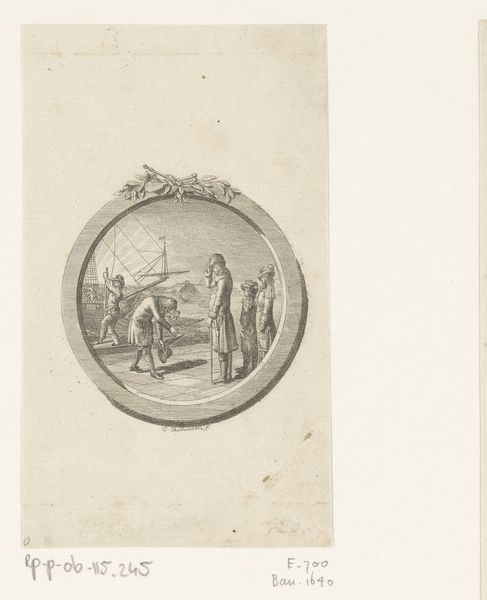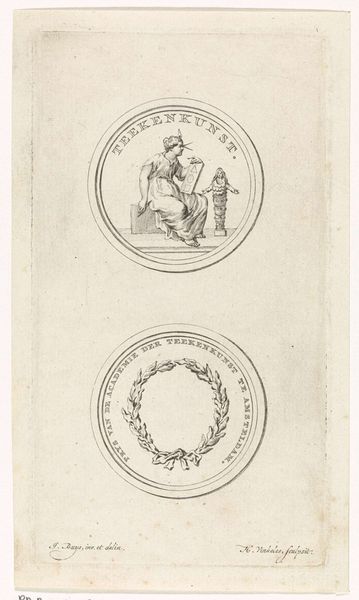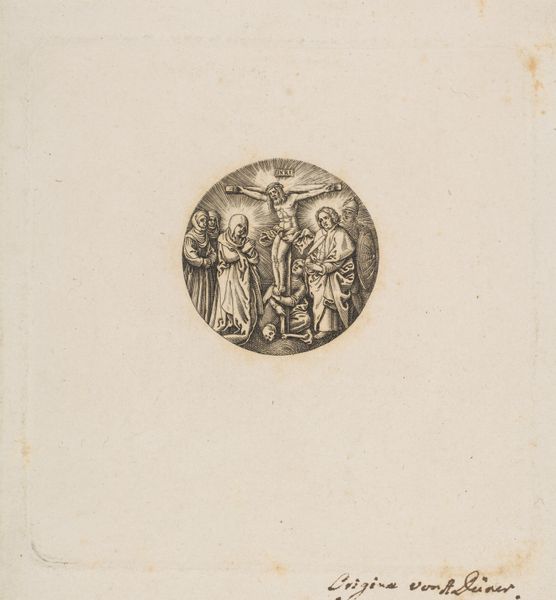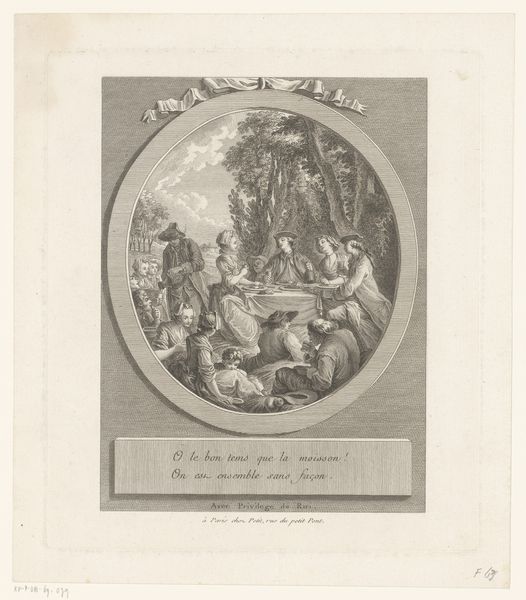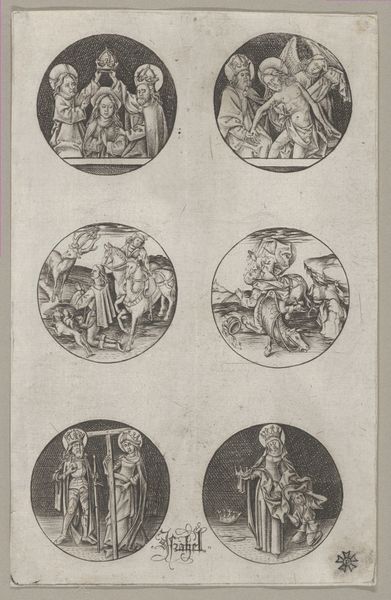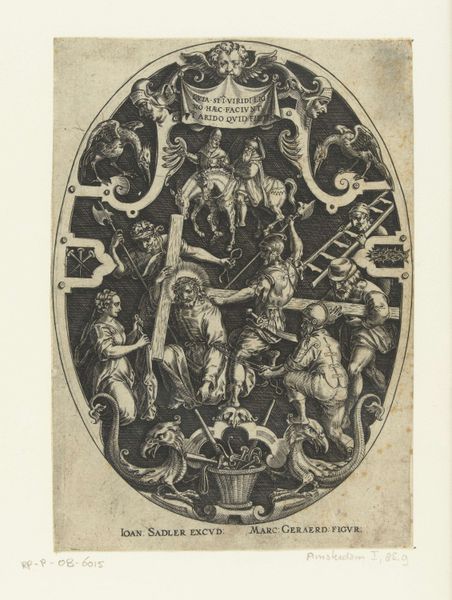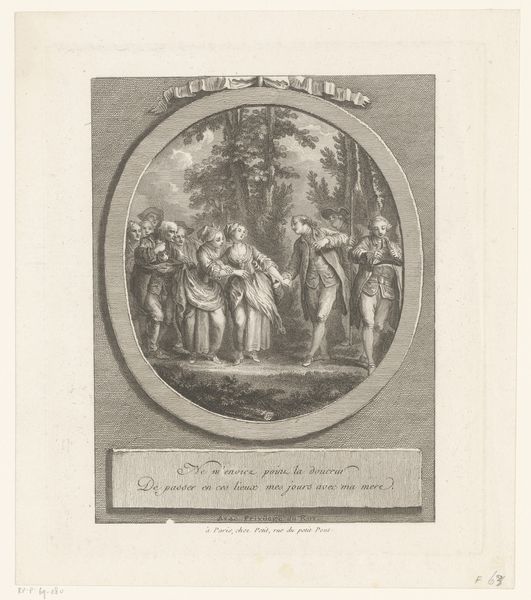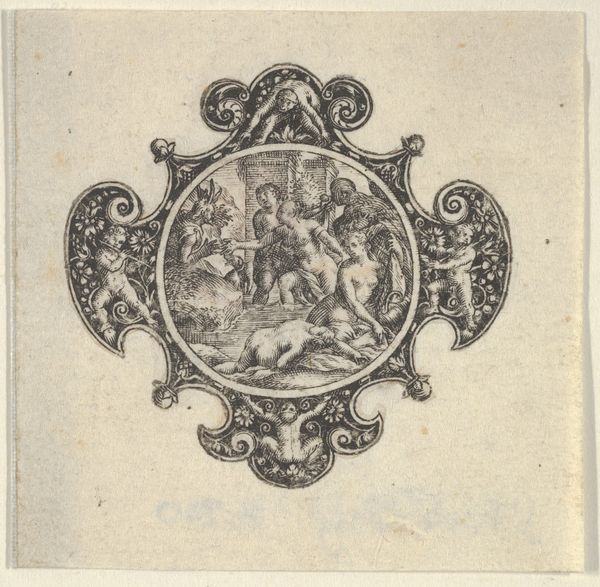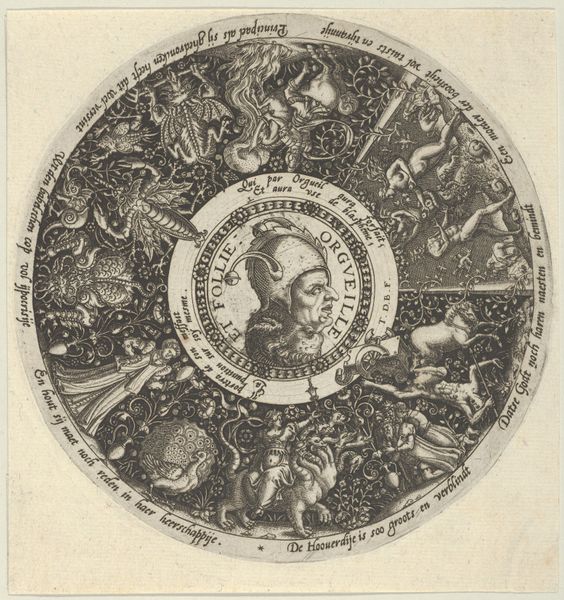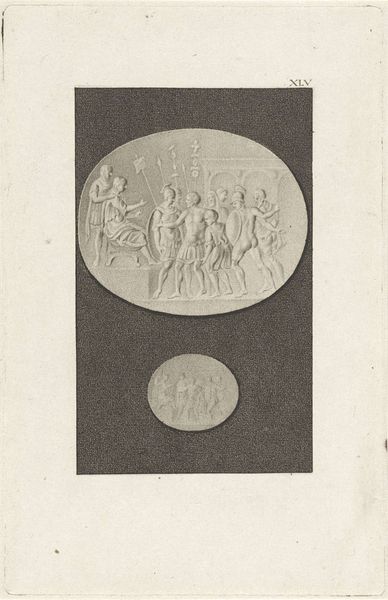
Germania te midden van zeven medaillons met keizer Ferdinand III en keurvorsten 1736 - 1857
0:00
0:00
danielnikolauschodowiecki
Rijksmuseum
Dimensions: height 111 mm, width 77 mm
Copyright: Rijks Museum: Open Domain
Curator: Look at this print, "Germania surrounded by seven medallions featuring Emperor Ferdinand III and Electors," attributed to Daniel Nikolaus Chodowiecki and dating roughly from 1736 to 1857. It's a fascinating piece, no? Editor: Indeed! My first thought is that this piece makes extensive use of the line. This linear method certainly gives the whole a stately, considered air. The detail seems incredible given it’s an engraving. Curator: Absolutely. Think about the social context that gives rise to images like these. Chodowiecki's print really reinforces hierarchical power, situating Ferdinand III as the symbolic center and connecting his image to an allegorical figure of "Germania" that evokes a very particular set of historical claims and ideological aspirations. Editor: You are correct that the meticulous use of engraving allows for detailed portraits. That repetitive labour required in producing this intricate work emphasizes craft and precision. Curator: I agree. But the print does more than simply depict: it seeks to establish an ideal relationship between the emperor and the electors, almost constructing a shared vision. In that sense, this imagery functions as an early version of political communication. Editor: A communication dependent on skillful means. It prompts an examination of the labor involved. This brings an artisan’s work— the printing and engraving — and elevates it through the prestige of representing power. Curator: Ultimately, the combination of sharp lines and allegorical framing reinforces the idea of an unbroken line of authority. I also find that the arrangement gives a rather gendered presentation to the empire as something both protected and embodied by its male leaders. Editor: You highlight the socio-political impact the portraiture conveys, its intended significance on seventeenth and eighteenth century hierarchy; for me this emphasis highlights the materiality required to transmit and record such a likeness in the first place. Curator: Yes, considering how the artwork's creation is interwoven with politics provides such insight. It invites a deeper reading. Editor: And on a material level, tracing those engraving processes offers us an enriched sense of the artist's presence, labor, and era.
Comments
No comments
Be the first to comment and join the conversation on the ultimate creative platform.
